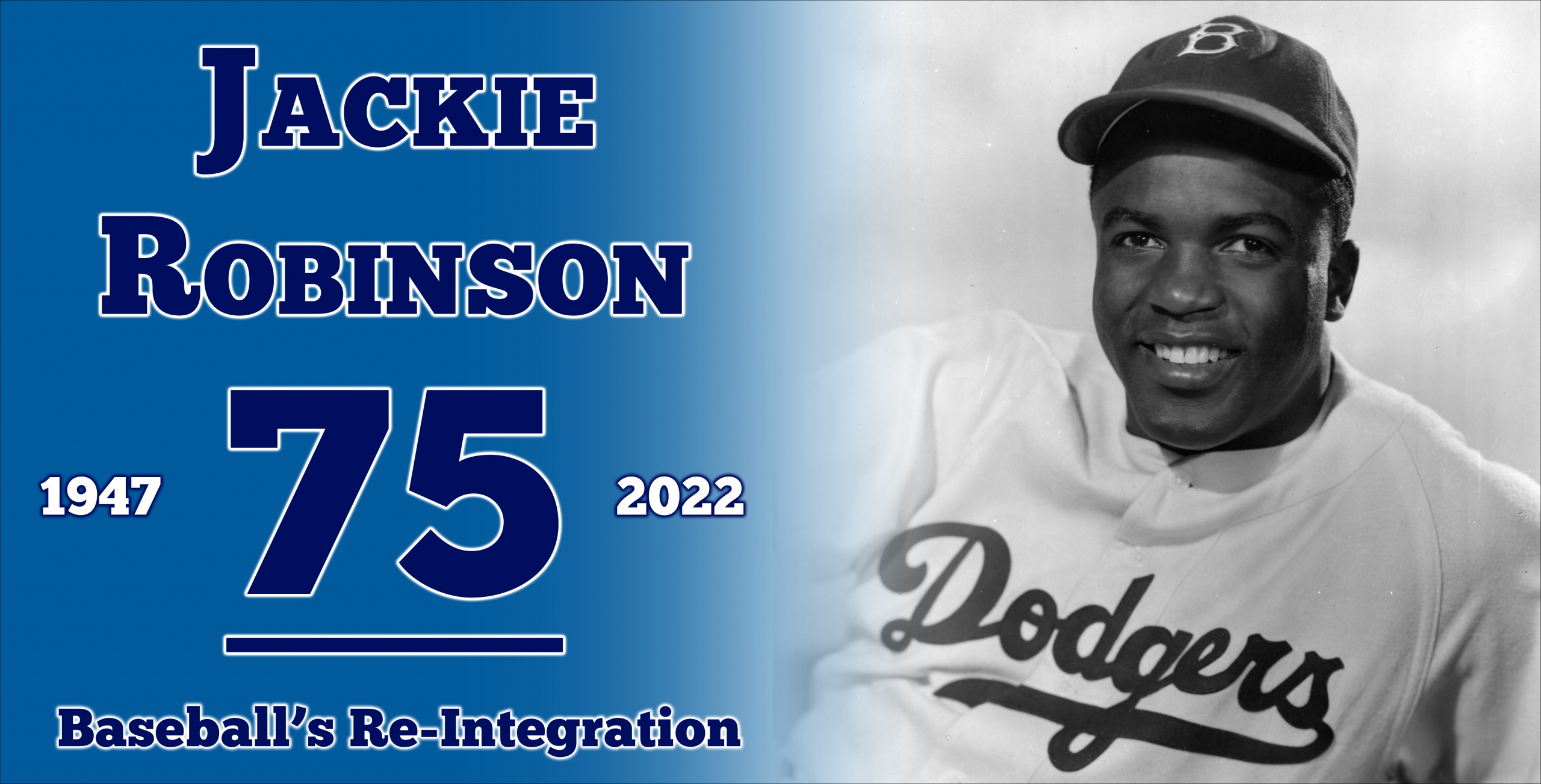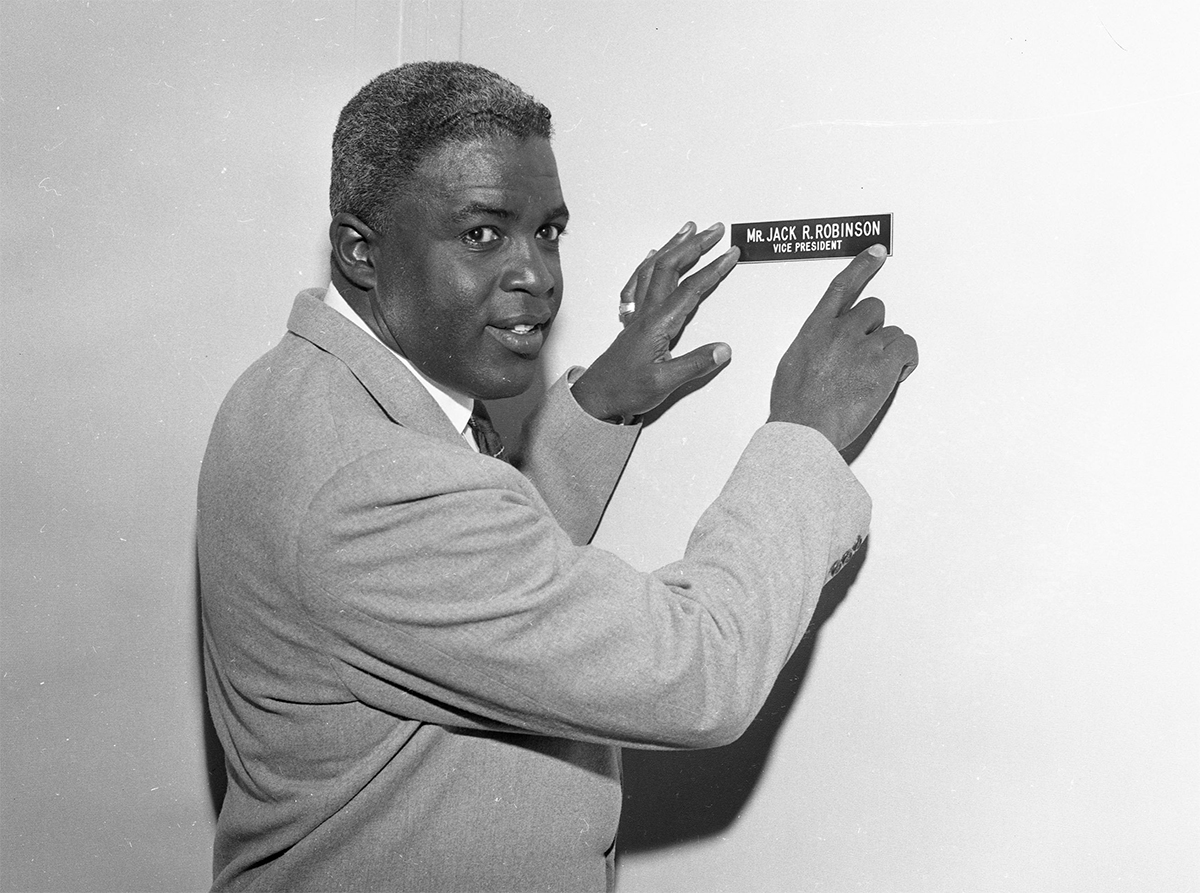Seventy-five years ago, on April 15, 1947, Jackie Robinson trotted out to first base at Ebbets Field in Brooklyn — the first Black man to appear in the all-White major leagues in the twentieth century. In his memoir, I Never Had It Made, Robinson wrote, “I never expected the walls to come tumbling down in my lifetime.”
With Jackie Robinson 75: Baseball’s Re-Integration, we commemorate the 75th anniversary of a historic moment in baseball and in American society. On these pages we will dive into the SABR Research Collection archives and draw on the contributions of more than 85 SABR authors and historians to tell the story of Robinson’s complicated, never guaranteed, journey as a civil rights pioneer on and off the field.
The re-integration of baseball was not an easy process. This project puts Robinson’s accomplishment into context by taking a look back to the Reconstruction Era of the nineteenth century, when the promise of a fully integrated baseball world briefly existed. We tell the stories of baseball’s great Black players who starred in both the major and minor leagues in the 1870s and 1880s, and examine how professional baseball ended up with a color line in the first place. We also take a look at the pivotal roles played by influential Black pioneers to fight for equality, from baseball executives Rube Foster and Sol White to sports writers Wendell Smith, Sam Lacy, and Fay Young — all of whom helped pave the way for Robinson nearly six decades later.
This historical background sets the stage for an in-depth look at the beginnings of Robinson’s professional baseball career and his path from being a star shortstop with the Kansas City Monarchs to his signing with the Dodgers in 1945. The project moves on to Robinson’s integration of the minor leagues with the Montreal Royals in 1946 before exploring his debut with the Brooklyn Dodgers in 1947 — a year filled with trials and triumphs.
Finally, this project celebrates the integration pioneers who came after Robinson, as the rest of the teams in the American and National Leagues signed Black players over the ensuing years. Those other integration pioneers never had it made either, and this project aims to pay homage to all of these heroes of America’s national pastime.
— Sharon Hamilton
SABR’s Century Committee invites you to join us for a celebration of Jackie Robinson Day:
Larry Lester: My Hero, Jackie Robinson
The summer of 1960 was a special season for the chair of SABR’s Negro Leagues Committee, who writes: “As a young lad growing up in Kansas City, I got my first glimpse of the legendary Jackie Robinson during a political tour. He was campaigning for Republican presidential candidate Richard Nixon. As a brash, up-and-coming little league player, I knew everything about this icon and the impact that the now-retired Jackie Robinson had had on breaking baseball’s color barrier back in 1947. I copied his pigeon-toed style of running and tried holding my bat high above my big head, with my potato-chip-flat chest to emulate his batting stance.
“And now #42 was coming to my town to give a campaign speech on behalf of a presidential candidate. To take this opportunity and to see Robinson in the flesh would be the ultimate, ever-lasting thrill for me.”
- Read more: “My Hero, Jackie Robinson,” by Larry Lester
An Interview with Sharon Robinson
Ralph Carhart, editor of SABR’s new book, Not an Easy Tale to Tell: Jackie Robinson on the Page, Stage, and Screen, recently spoke with Sharon Robinson, the daughter of Jackie and Rachel. Over the course of two interviews, we discussed representations of her father. The conversation was frank, detailed, and gave a keen insight into just how involved the Robinson family has been in telling their patriarch’s tale.
Sharon also discussed her father’s artistic legacy, the role of context in telling history, and what it was like for a little girl to see her father portray himself in a movie for the first time, surrounded by a group of her White friends.
- Read more: “An Interview with Sharon Robinson,” by Ralph Carhart
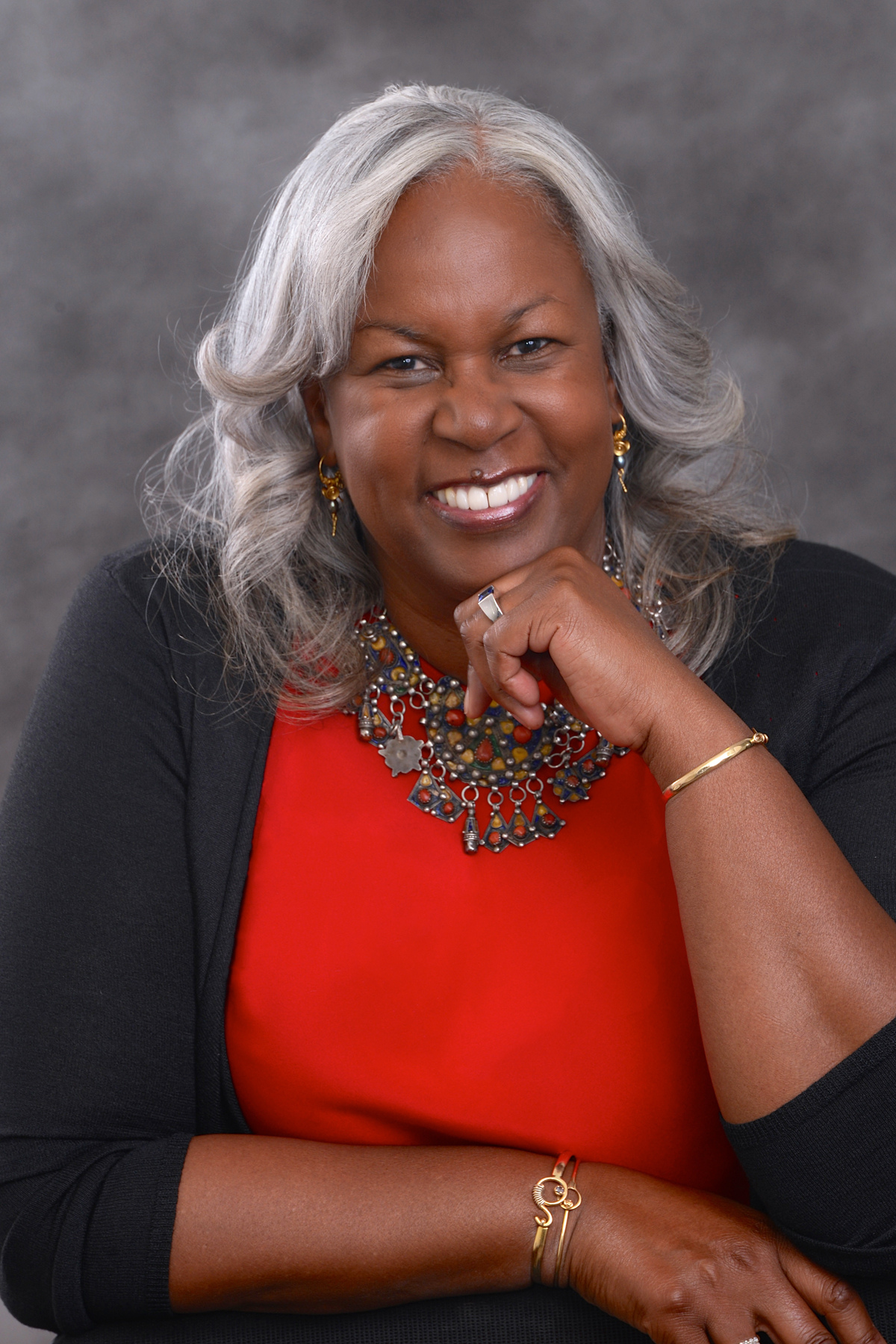
Sharon Robinson, daughter of Jackie and Rachel Robinson, in 2020. (Photo: John Vecchiolla)
Further Reading
Get your copy of these SABR books on Jackie Robinson and the 1947 Brooklyn Dodgers:
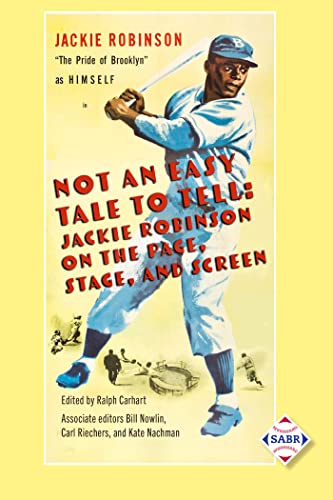 Not an Easy Tale to Tell: Jackie Robinson on the Page, Stage, and Screen
Not an Easy Tale to Tell: Jackie Robinson on the Page, Stage, and Screen
Edited by Ralph Carhart (SABR, 2022)
Download the free e-book | Save 50% off the paperback
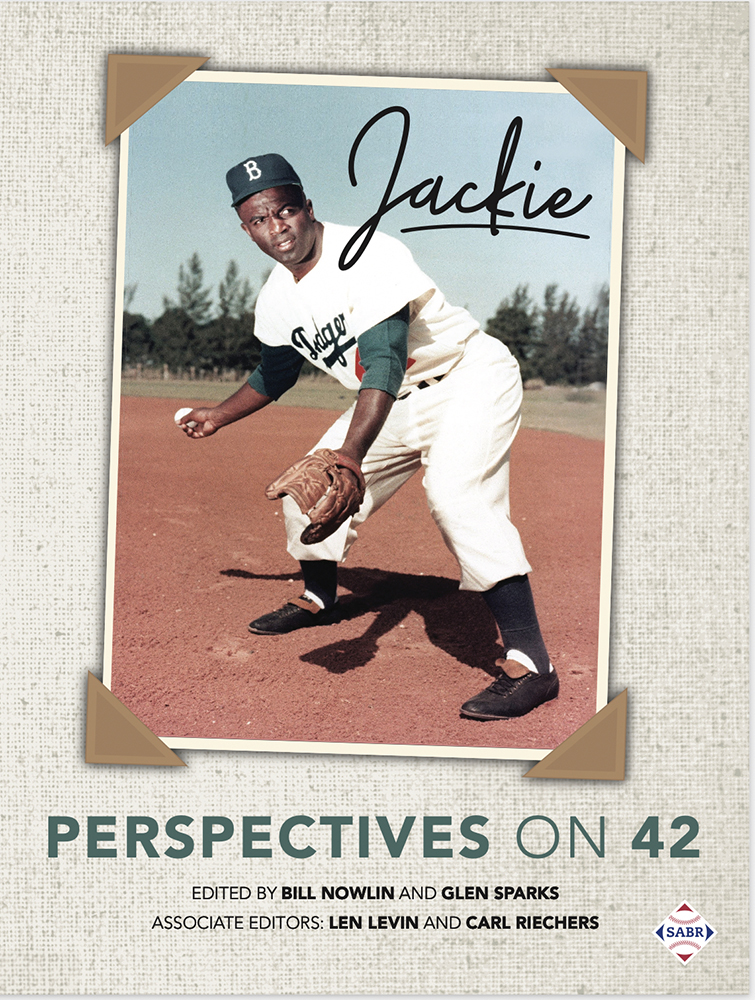 Jackie: Perspectives on 42
Jackie: Perspectives on 42
Edited by Bill Nowlin and Glen Sparks (SABR, 2021)
Download the free e-book | Save 50% off the paperback
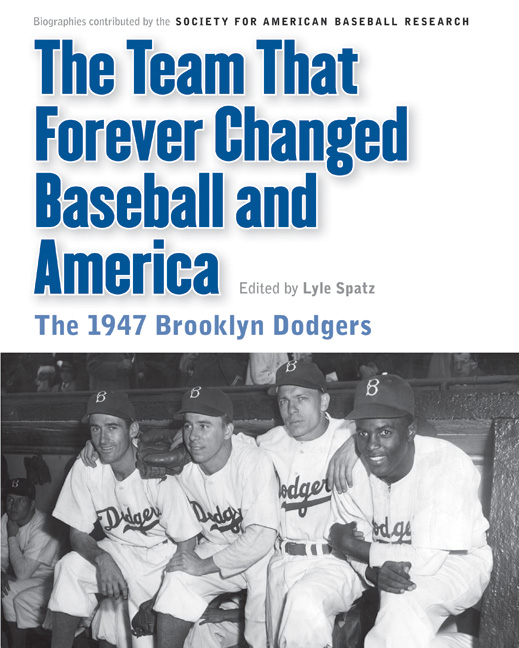 The Team That Forever Changed Baseball and America: The 1947 Brooklyn Dodgers
The Team That Forever Changed Baseball and America: The 1947 Brooklyn Dodgers
Edited by Lyle Spatz (SABR, 2012)
Purchase the paperback or e-book from University of Nebraska Press


